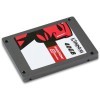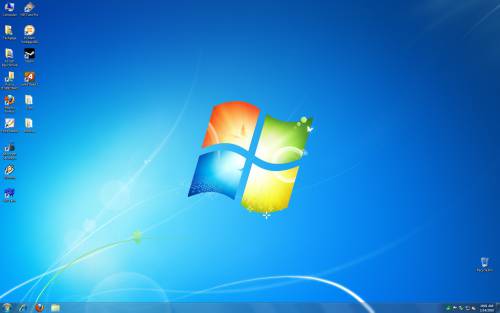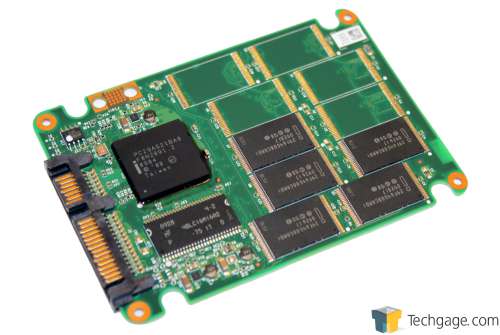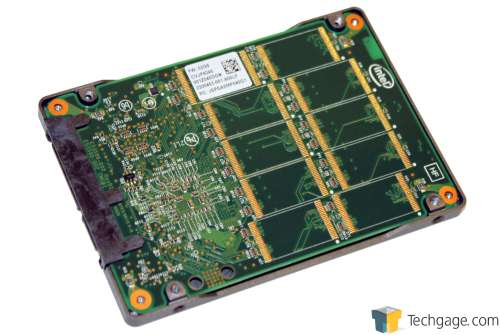- Qualcomm Launches Snapdragon 4 Gen 2 Mobile Platform
- AMD Launches Ryzen PRO 7000 Series Mobile & Desktop Platform
- Intel Launches Sleek Single-Slot Arc Pro A60 Workstation Graphics Card
- NVIDIA Announces Latest Ada Lovelace Additions: GeForce RTX 4060 Ti & RTX 4060
- Maxon Redshift With AMD Radeon GPU Rendering Support Now Available
Kingston SSDNow V Series 40GB

Want to make the upgrade to a solid-state drive, but prefer to avoid the high cost of adoption? Kingston helps ease that pain with its SSDNow V Series 40GB, a modest drive that features Intel’s NAND and impressive G2 firmware, which helps it deliver stellar performance when compared to an HDD, for an easy-to-stomach price.
Page 2 – Drive Internals; Test System & Methodology
The SSDNow’s housing is aluminum, not plastic, which gives the unit a nice solid feel. As with most other SSDs, the form factor is the same 2.5″ we’ve come to expect, requiring an adapter before it can be securely installed into a typical drive bay, which Kingston thoughtfully provides as part of their “desktop upgrade kit”. “S2BD” drives include the upgrade kit, while “S2” models are just the bare drives. You can expect a ~$15 premium for these kits, which also includes Acronis’ excellent drive backup and cloning software.
Inside, there are five Intel-branded NAND flash chips. These are the older 8GB 50nm flash chips, and as the capacity suggests, exactly half of what could be installed, are installed. In effect, this drive is otherwise the same as Intel’s 80GB first generation, except that it does feature the revised Intel controller from the second generation. This is important as it means we can expect Intel’s typical levels of performance, albeit diminished given half of the default 10 flash channels are not present. It also means that if Intel had wanted, this drive could support TRIM later on, but as it appears, that’s not going to happen, as it prefers to keep TRIM exclusive to its own 40GB SSDs.
Test System & Methodology
At Techgage, we strive to make sure our results are as accurate as possible. Our testing is rigorous and time-consuming, but we feel the effort is worth it. In an attempt to leave no question unanswered, this page contains not only our testbed specifications, but also a fully-detailed look at how we conduct our testing.
If there is a bit of information that we’ve omitted, or you wish to offer thoughts or suggest changes, please feel free to shoot us an e-mail or post in our forums.
The table below lists the hardware used in our current storage-testing machine, which remains unchanged throughout all of our testing, with the obvious exception of the storage device. Each drive used for the sake of comparison is also listed here.
|
Component
|
Techgage Hard Drive Test System
|
| Processor |
Intel Core 2 Quad Q6600 – 2.4GHz Quad-Core
|
| Motherboard |
Gigabyte GA-EP35-DS4
|
| Memory |
4GB Corsair 800MHz CAS 4
|
| Graphics |
Foxconn 8800 GTS 320MB
|
| Audio |
On-Board Audio
|
| Storage |
Intel X25-M G1 80GB
Kingston SSDNow V Series 40GB OCZ Summit 60GB Seagate Barracuda 7200.10 320GB |
| Power Supply |
PC Power & Cooling Quad Silencer 750W
|
| Cooling |
Arctic Freezer 7 Pro
|
| Et cetera |
Lite-on DVD-RW
Windows 7 Ultimate 64-bit |
When preparing our testbeds for any type of performance testing, we follow these guidelines:
- General Guidelines
- No power-saving options are enabled in the motherboard’s BIOS.
- Internet is disabled.
- No Virus Scanner or Firewall is installed.
- The OS is kept clean; no scrap files are left in between runs.
- Machine has proper airflow and the room temperature is 80°F (27°C) or less.
- Windows 7 Optimizations
- User Account Control (UAC) is disabled.
- Windows Defender, Firewall, Security Center, Search, and Updates are disabled.
For consistency all power-saving options are disabled in the system BIOS, and for best SSD performance, AHCI is enabled. For Windows 7 the UAC control, windows update, and power saving features are also disabled.
 Our Windows 7 Desktop for SSD Testing |
To aide with the goal of keeping accurate and repeatable results, we alter certain services in Windows 7 from starting up at boot. This is due to the fact that these services have the tendency to start up in the background without notice, potentially causing slightly inaccurate results. Disabling “Windows Search” turns off the OS’ indexing which can at times utilize the hard drive and memory more than we’d like.
Solid-State Drive Benchmarking
As we are using SSDs, we made sure all drives were in a dirtied state before we began testing. We recognize that TRIM support completely does away with the need to “dirty” a sold-state drive, but not all SSDs yet support this feature. Cloned test images were not used as these can result in non-aligned partitions, and the process of installing the OS will only further help dirty a SSD in addition to mirroring what the typical user can expect to receive from the drive. For obvious reasons, only the sole HDD in this review was defragmented prior to testing.
For testing, we ran all tests five times, dropping the highest and lowest results to finally average the middle three. And who said that college statistics class wouldn’t prove useful? If any anomalous results were seen, the test was run again. Given the complexities of modern computers, and especially today’s operating systems, we feel this provides the most accurate results possible.
As a result we at Techgage are going to stay current with the trends in technology and will be expanding our storage coverage to include solid-state drives, such as this one. This poses a challenge as benchmarking storage is not as straightforward as benchmarking a CPU or GPU, and SSDs make it even more difficult. The fact is there simply is no way to benchmark the snappy, responsive feel a good quality SSD will give a computer, or that overall positive user experience it should bring.
If you have any benchmarks or scenarios that are storage-dependant (that is to say bottlenecked by the hard drive) and would like to see those tested, please drop by our forums and let us know! We are always looking to expand our SSD benchmarks and provide more useful and real-world results, and not just synthetic results.
Support our efforts! With ad revenue at an all-time low for written websites, we're relying more than ever on reader support to help us continue putting so much effort into this type of content. You can support us by becoming a Patron, or by using our Amazon shopping affiliate links listed through our articles. Thanks for your support!






